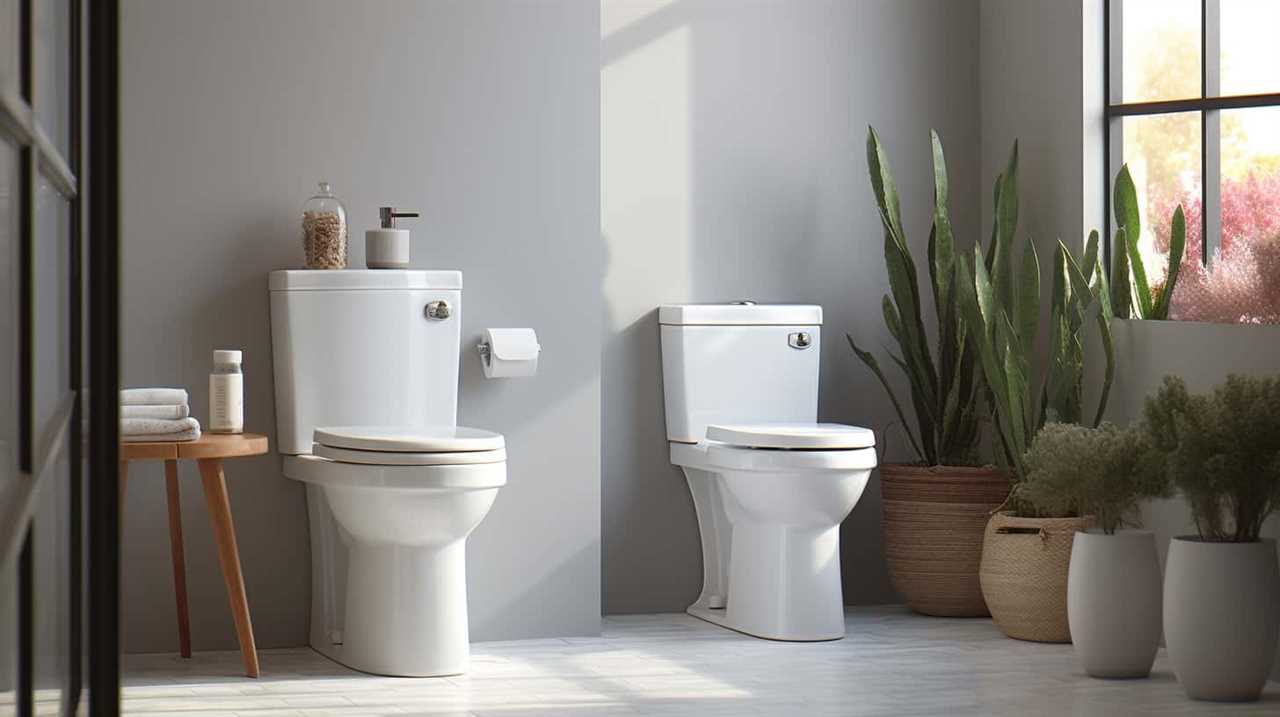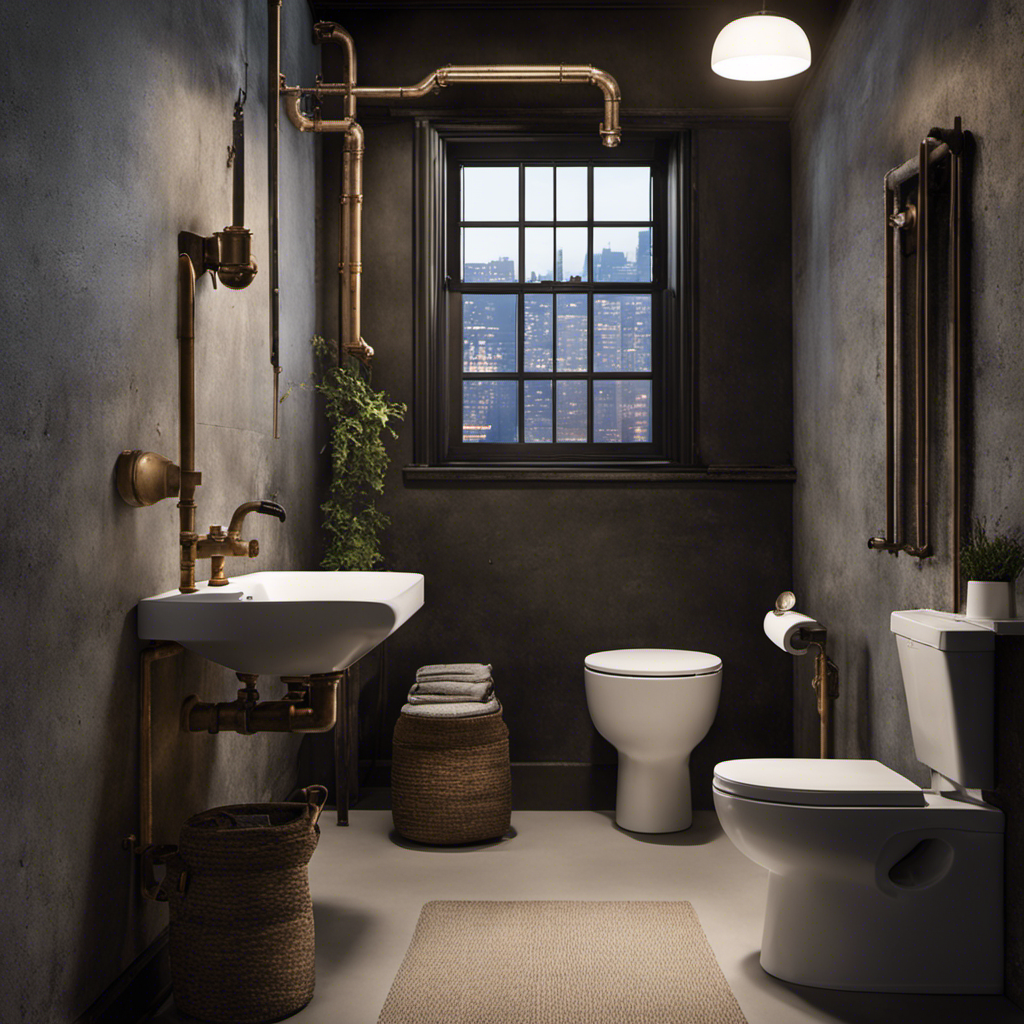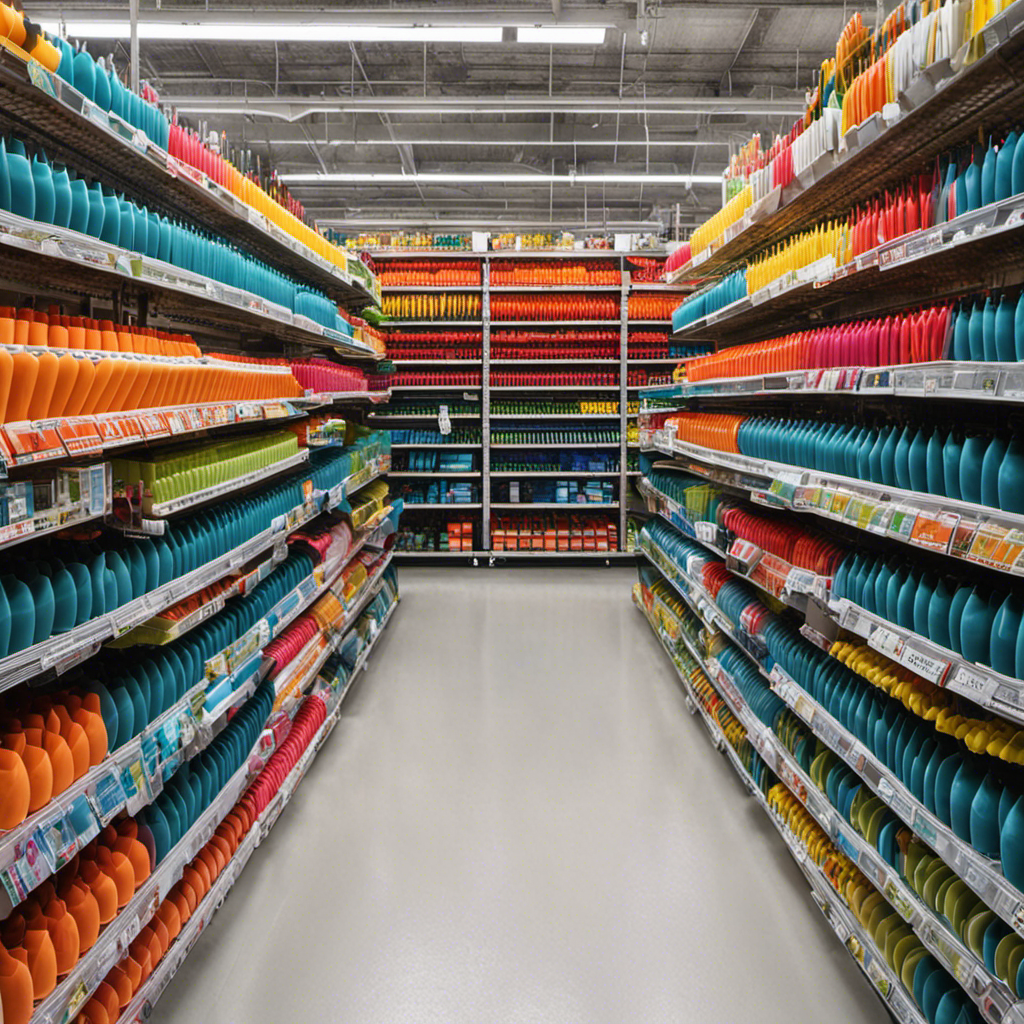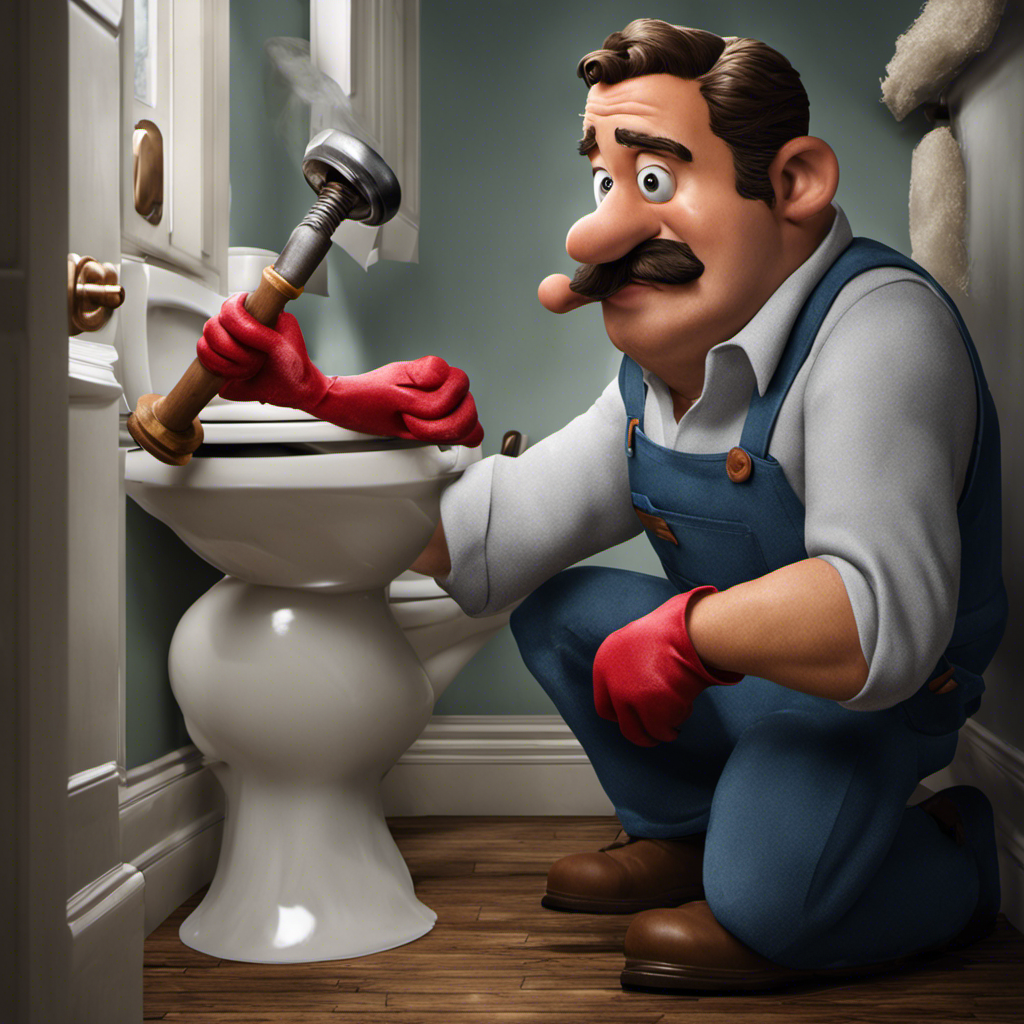Have you ever wondered what happens when we flush cat litter down the toilet? Let’s explore the consequences of this seemingly harmless act.
When we do this, we unknowingly cause serious environmental damage, plumbing problems, and water contamination.
Not only that, but it also poses health risks and can even lead to legal consequences.
In this article, we will delve into the technical and sustainable aspects of this issue, providing you with the knowledge to master proper waste disposal.

Key Takeaways
- Flushing cat litter down the toilet can contaminate water sources and harm aquatic ecosystems.
- It can cause sewage backup and pipe blockages, leading to costly repairs and disruptions to the plumbing system.
- Cat litter contains chemicals, bacteria, and parasites that can contaminate water sources and harm aquatic life.
- Improper disposal of cat litter can result in legal consequences, including fines and legal liabilities for environmental harm.
Environmental Impact
Flushing cat litter down the toilet can have detrimental environmental impacts due to the potential contamination of water sources. Proper waste management is crucial to prevent ecological damage caused by this practice.
When cat litter is flushed, it enters the wastewater treatment system, which is designed to handle human waste and biodegradable materials. However, cat litter contains non-biodegradable materials such as clay and silica, which can clog pipes and disrupt the treatment process. These materials can also end up in rivers, lakes, and oceans, harming aquatic ecosystems.
Additionally, cat litter may contain harmful pathogens, such as Toxoplasma gondii, which can cause serious illnesses in marine life.
To protect our water sources and minimize ecological damage, it’s essential to dispose of cat litter in a proper and responsible manner, such as bagging it securely and placing it in the garbage.
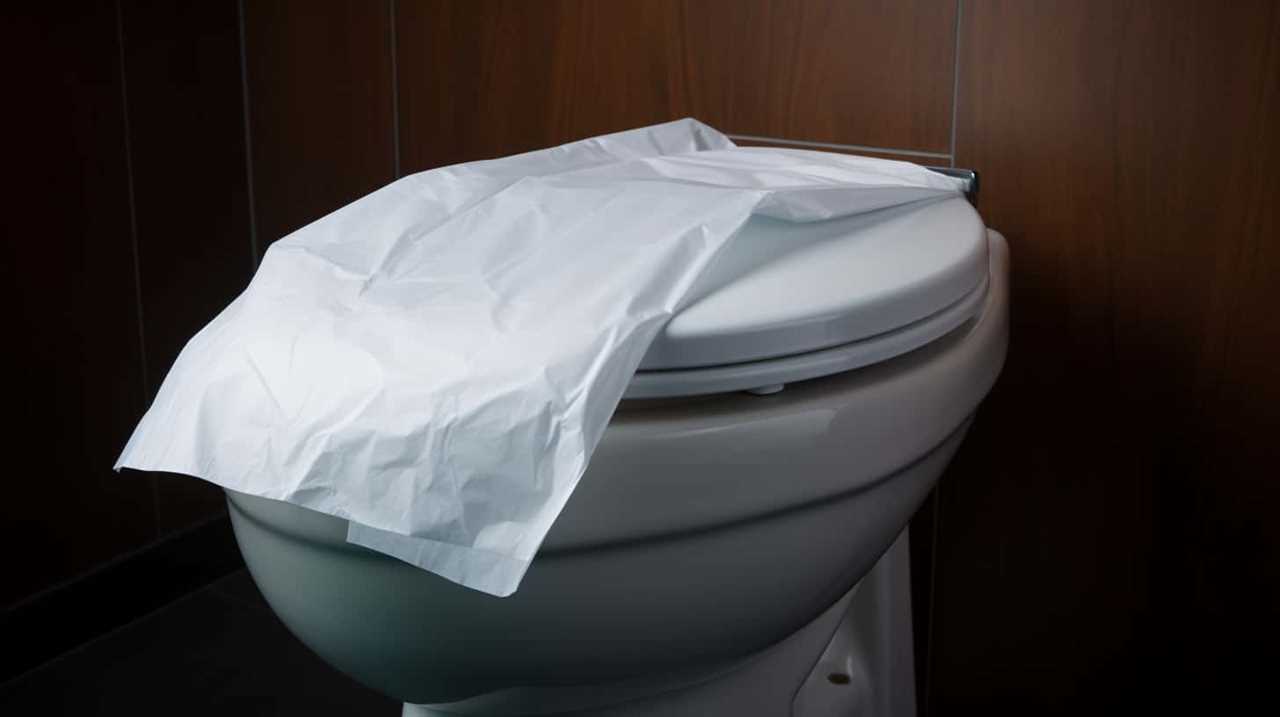
Plumbing Problems
When we flush cat litter down the toilet, it can lead to various plumbing problems.
One of the main issues that can arise is sewage backup. Cat litter isn’t soluble and can easily accumulate in the pipes, causing blockages and hindering the flow of wastewater. This can result in sewage backup, leading to unpleasant odors, unsanitary conditions, and potential health hazards.
Additionally, cat litter can cause pipe damage. The abrasive nature of the litter can scratch and weaken the pipes over time, making them more susceptible to cracks, leaks, and eventual failure. This can result in costly repairs and disruptions to the plumbing system.
Therefore, it’s crucial to dispose of cat litter properly and avoid flushing it down the toilet to prevent these plumbing problems.
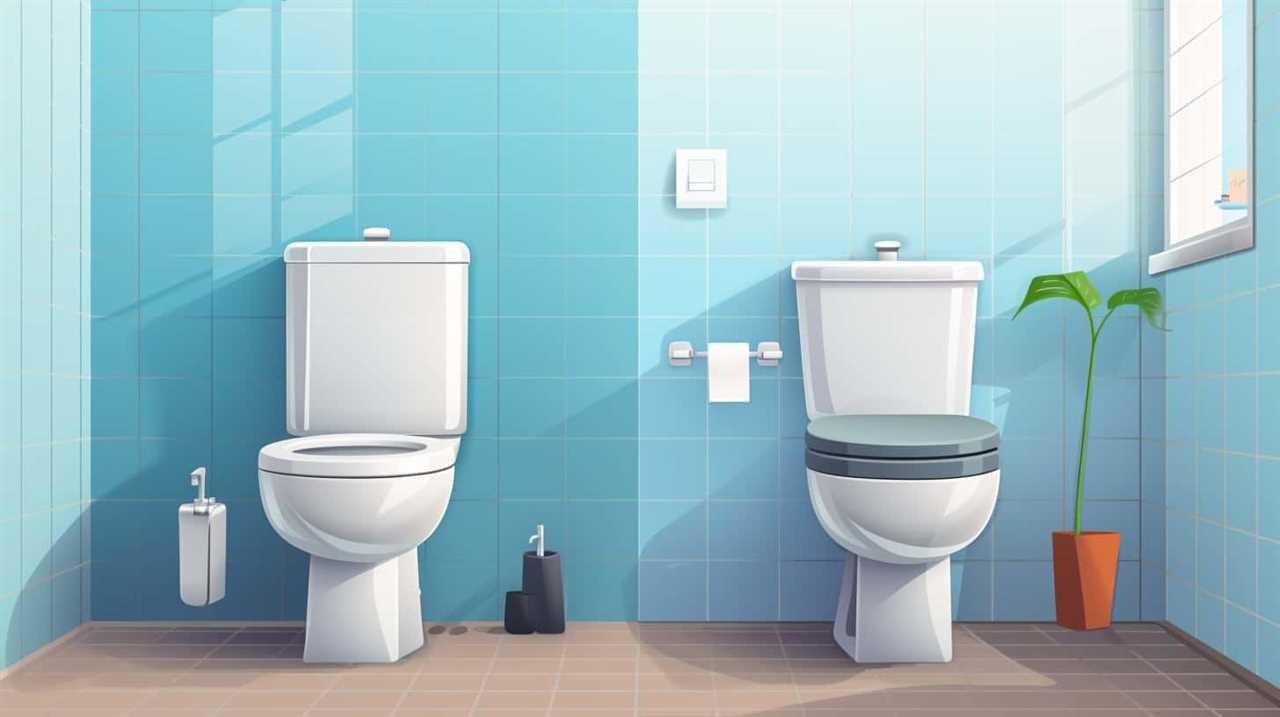
Water Contamination
To continue our discussion on plumbing problems caused by flushing cat litter down the toilet, one of the significant consequences is the potential for water contamination. When cat litter is flushed, it can lead to water pollution, posing a threat to aquatic ecosystems and fish habitat. The litter contains various chemicals, bacteria, and parasites that can contaminate the water supply if not properly filtered and treated. This contamination can have detrimental effects on aquatic life and the overall health of the ecosystem. It is essential to understand the importance of proper waste disposal and the impact it has on our water resources. By disposing of cat litter in the appropriate manner, we can help prevent water pollution and protect the delicate balance of our aquatic environments.
| Water Contamination | Effects |
|---|---|
| Fish Habitat | Endangered |
| Water Pollution | Harmful to aquatic life |
| Contaminants | Chemicals, bacteria, parasites |
| Treatment | Proper filtration and disposal |
Health Risks
As we delve into the topic of health risks associated with flushing cat litter down the toilet, it’s crucial for us to consider the potential dangers it poses to both humans and animals alike. The improper disposal of cat litter through flushing can lead to disease transmission and compromise pet safety.
Flushing cat litter introduces harmful bacteria and parasites into the water supply, increasing the risk of diseases such as toxoplasmosis and salmonellosis. These pathogens can survive in water sources and infect both humans and animals who come into contact with contaminated water. Additionally, the chemicals present in some cat litters may further pollute the water, causing adverse effects on aquatic life.
To ensure pet safety and protect human health, it’s important to dispose of cat litter properly. This involves using designated waste bins, which can prevent disease transmission and minimize environmental contamination. By taking these precautions, we can safeguard the well-being of both ourselves and our beloved pets.

Transitioning into the subsequent section about ‘legal consequences’, it’s essential to understand the potential legal ramifications of improper disposal methods.
Legal Consequences
Now let’s delve into the legal consequences that can arise from the improper disposal of cat litter by flushing it down the toilet.
Here are the potential legal consequences you may face for flushing cat litter down the toilet:
- Fines: Improperly disposing of cat litter by flushing it down the toilet can result in hefty fines. Many municipalities have strict regulations in place to protect the wastewater treatment system from contamination.
- Environmental violations: Flushing cat litter down the toilet can lead to environmental violations. This is because cat litter often contains harmful substances that can harm aquatic life and disrupt the delicate balance of ecosystems.
- Damage to the wastewater treatment system: Cat litter isn’t designed to be processed by wastewater treatment facilities. Flushing it down the toilet can clog pipes and damage equipment, leading to costly repairs and disruptions in the treatment process.
- Legal liabilities: Improper disposal of cat litter can also open you up to legal liabilities. If your actions cause damage to the wastewater treatment system or harm the environment, you may be held legally responsible for any resulting damages or cleanup costs.
It is crucial to understand and abide by the proper methods of cat litter disposal to avoid these legal consequences.

Frequently Asked Questions
Can I Flush Biodegradable Cat Litter Down the Toilet?
Flushing biodegradable cat litter down the toilet is not recommended. There are better alternatives to dispose of cat litter, considering its environmental impact. We will discuss the reasons and options for proper disposal.
Can Cat Litter Clog Septic Systems?
Can cat litter clog septic systems? Flushing cat litter down the toilet is not recommended due to its environmental impact. The disposal of cat litter should be done in a responsible manner to avoid potential issues.
Is It Safe to Flush Cat Litter Made From Recycled Materials?
Flushing cat litter made from recycled materials poses potential environmental risks. To ensure sustainability, we recommend using alternative disposal methods such as composting or disposing of it in the trash.
Does Flushing Cat Litter Down the Toilet Affect Marine Life?
Flushing cat litter down the toilet can have a significant impact on sewage treatment plants and potentially lead to the spread of parasites. This poses a threat to marine life and the overall health of our ecosystems.

Can Flushing Cat Litter Down the Toilet Lead to Groundwater Contamination?
Flushing cat litter down the toilet can lead to groundwater pollution and have a significant environmental impact. It is crucial to understand the consequences and adopt sustainable practices to minimize the potential harm caused.
Conclusion
Flushing cat litter down the toilet is an absolute disaster waiting to happen. It wreaks havoc on the environment, causing irreversible damage to water bodies. Plumbing systems suffer greatly, leading to costly repairs and blockages.
Moreover, the contamination of water sources poses a serious health risk to both humans and wildlife. Don’t even get me started on the legal consequences! It’s a recipe for chaos and should be avoided at all costs.
So, let’s be responsible pet owners and dispose of cat litter properly, shall we?
